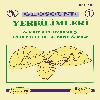Kozlar (Beyağaç-Denizli) Karaismailler (Kelekçi-Denizli) arası ofiyolitlerinin petrografisi ile bunlara bağlı kromit yataklarının jeolojik ve jeokimyasal incelemesi
Çalışma alanında en altta Üst Kretase - Paleosen Flişi yer almaktadır. Bu birim otokton konumludur. Bunun üzerine yataya yakın tektonik dokanaklı olarak Mesozoyik Kireçtaşlan ve "Ofiyolitik seri" gelmektedir. Ofiyolitik seri" tektonitler ve bunları kesen damar kay açları olmak üzere iki ana birim içerir ve eksik dizi karakterli bir ofiyolit topluluğunu temsil eder. Pliyosen kırıntılı çökelleri tüm alttaki birimler üzerine açısal uyumsuzlıkla örtmektedir. Podiform kromit kütleleri kalıntı üst manto peridotitleri içinde oluşmuş olup, bu peridotitler, harzburjit ve dünit bileşimindedir. Merceksel ve az çok plakamsı şekillerde yataklanma gösteren kromit kütlelerinde başlıca masif, nodüler, saçınımlı ve bantlı cevher gözlenmiştir. Yapısal, mineralojik ve kimyasal özellikler, podiform kromit kütlelerinin yan kayaçla eş zamanlı bir oluşum olduğunu göstermektedir, inceleme alanı podiform kromit kütleleri ve bunlarla ilişkili dünitik kılıf ve yan kay aç harzbujitlerin oluşumunu açıklamak için üst mantoda kayacı'eriyik reaksiyonlarının gerekli olduğuna dair Zhou ve diğ. (1994) tarafından önerilen yeni bir model benimsenmektedir.
Petrography of the ophiolites of Kozlar (Beyağaç-Denizli) Karaismailler (Kelekçi-Denizli) area and geologic-geochemical investigation of related chromite deposits
At the base, Upper Cretacaeous - Lower Paleoceneous aged flysh is situated, in the studied area. This unite is autochthonous and are overlain by Mesozoic Limestone and ophiolitic series with a tectonic boundaries. Ophiolithic series are composed of two main components. These are tectonites and vein rocks which cut throug the tectonites . It represents an incomplete ophiolitic assemblage. Atl of the formation at the basement are overlain with an angular disconformity by the Pliocene aged sediments. Podiform chromitite bodies were occured in the upper mantle residual peridotites. These are consist of harzburgites and dünites. Four types of chromites have been observed in the chromite ore bodies with lens and layer shaped. These are disseminated , nodular, massive and banded ores. Structural, mineralogic and chemical properties show that chromite deposits formed contemporaneously with their enclosing rocks. It is appropriate that a new model proposed by Zhou ve diğ.(1994) involving melt/rock interaction in the upper mantle to explain the formation of podiform chromitites and their relationships to the host dünites and harzburgites.
___
- ISSN: 1019-1003
- Yayın Aralığı: Yılda 2 Sayı
- Başlangıç: 1986
- Yayıncı: Çukurova Üniversitesi Jeoloji Mühendisliği Bölümü
Sayıdaki Diğer Makaleler
Madencilikte yatırım kararı aşamaları
Deniz MAMUREKLİ, Cem SARAÇ, Cumhur AYDIN
Kıtasal ölçekli doğrultu atımlı fay zonlarında üçüncü boyut
Akıllı veritabanları ve madencilik sektörüne uygulanabilirliği
Cem SARAÇ, D. MAMUREKLİ, D. BAHAR
Zemin sıvılaşması analizlerinin sismik hızlar yardımıyla yapılması
Foraminiferler ile fosilleşme analizine bir örnek: Isparta dolayları Kretase-Tersiyer istifleri
Gümüşler (Niğde) antimon-civa cevherleşmesinin mineralojik incelemesi
